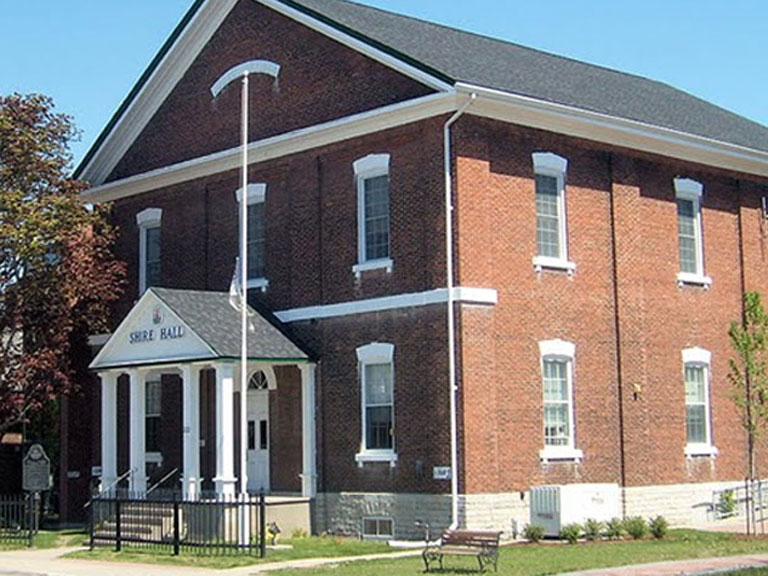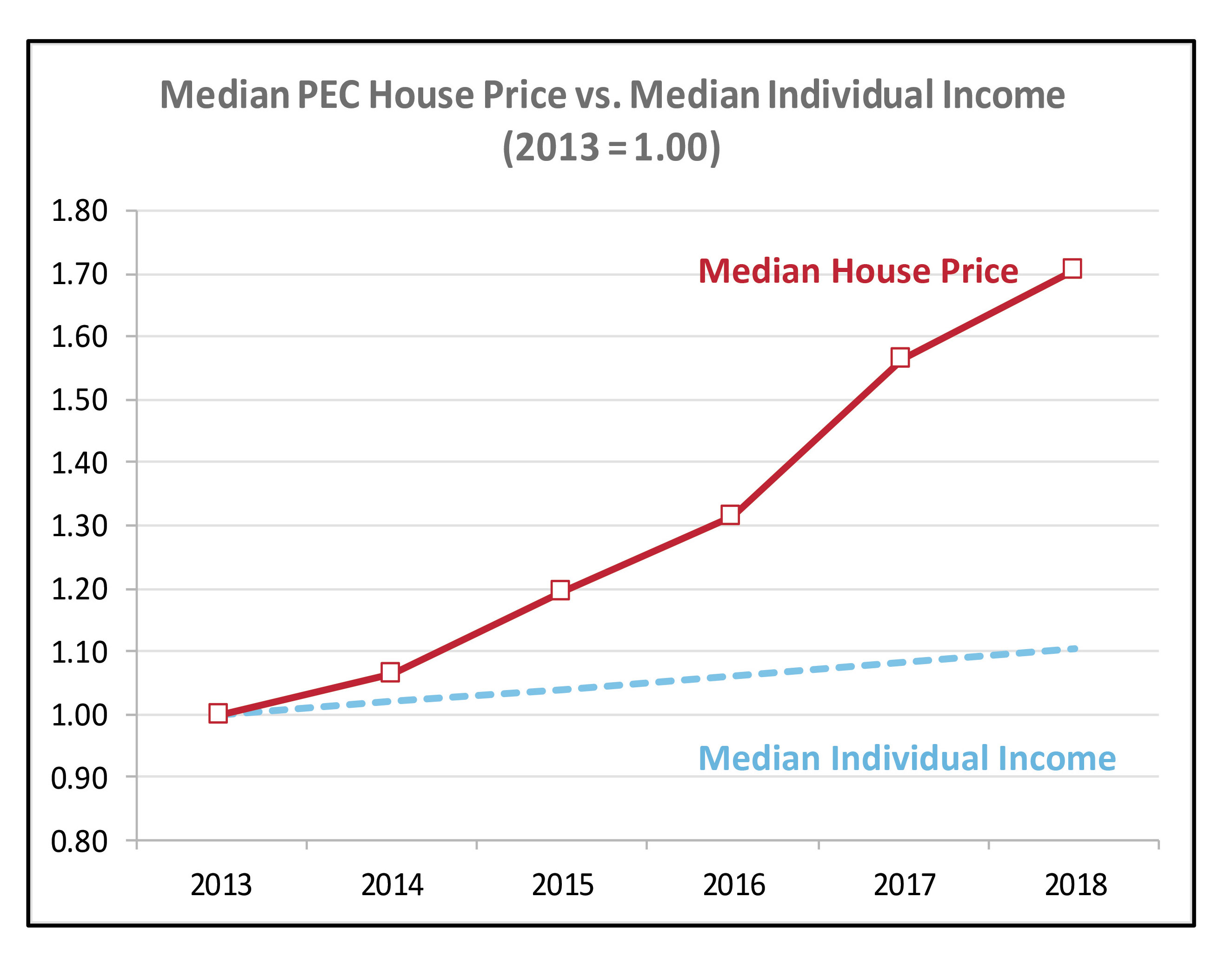County News
The numbers

The economics of the County’s affordability trap
Councillor Bill Roberts spelled it out plainly. With undeniable, indisputable, inarguable facts.
“We need to look at the numbers,” began the Sophiasburgh councillor. “We are looking at the average price of a home in the County over the next 12 months rising to more than $650,000. We have had a price increase in the average house in the County of 41 per cent year over year. That is double the increase of house prices in Toronto according to the Toronto Real Estate Board.”
“We need inventory for people in the $275,000 to $375,000 bracket. This may well be the last time we see market forces actually delivering this.”
Nevertheless, a majority of Council (8-6) voted to reject the project that would have delivered townhomes at this price point. Some said it wasn’t affordable enough; some said it was too dense a development, others said it wasn’t their vision for Prince Edward County. Only Councillors Margetson, Harper, St-Jean, Hirsch and Mayor Ferguson joined Roberts to support the project.
Yet, the arithmetic is irrefutable. Unrelenting. Unforgiving.
The supply of homes priced under $300,000 has withered over a decade to the point it is now effectively extinct. With it went the prospect of living in the County for working families. For young people hoping to start a life here.
Yet demand continues to grow wildly— spurred by COVID-19. Folks from the city bid up the price of whatever comes on the market. Moreover, new homebuilding in Prince Edward County has lagged market demand by a vast and growing margin.
The balance between supply and demand, while strained and tattered for a decade, is now broken. The result, unsurprisingly, is escalating house prices. Furthermore, until some balance is restored (either by rising supply or diminished demand), prices will continue to climb.
“We have zero inventory,” said Roberts. “We need more supply.”
It is leaving many folks house-rich but income poor. Eventually, they wave the white flag. But it won’t stop there. As Councillor Mike Harper (Wellington) observed last week, the same forces threaten to hollow out the middle-income earners in Prince Edward County.
Roberts also spoke to the matter of increased density. Many of the opponents, on council and among the public, pointed to the higher density (units per acre) proposed in this townhome development.
When all other factors are equal, the only way to create more affordable housing (short of massive direct subsidization) is to increase the number of homes, apartments, and the parcel of land. It is how to achieve efficiency in building use, construction costs, fees etc. More units on a smaller footprint.
“It is the density that allows this allows the economics to work at this price point,” explained Roberts. “It is just a fact of the marketplace and the homebuilding sector in Prince Edward County.
“It might not meet everyone’s definition of affordable housing, but at 40 per cent below the median is much more affordable.”
The developer of Talbot on the Trail had reworked his project plan so that the starting price of some units was under $300,000. To accomplish this, he increased the proposed density—more units on the same amount of land. It made no difference. It was now too dense for some councillors. For others, it wasn’t affordable enough.
Math and economics are unforgiving. The pressures that have rendered the County unaffordable to all but the wealthy, remain intact. Pulsing. Coursing down every street and road. It is there in every conversation about how much the neighbour’s house sold for. It is changing Prince Edward County. Disqualifying all but the very rich.

This chart paints a stark picture of trends that have rendered the County unaffordable to all but the wealthy. It was prepared by the County’s Affordable Housing Task Force and presented to Council 2018.

Comments (0)